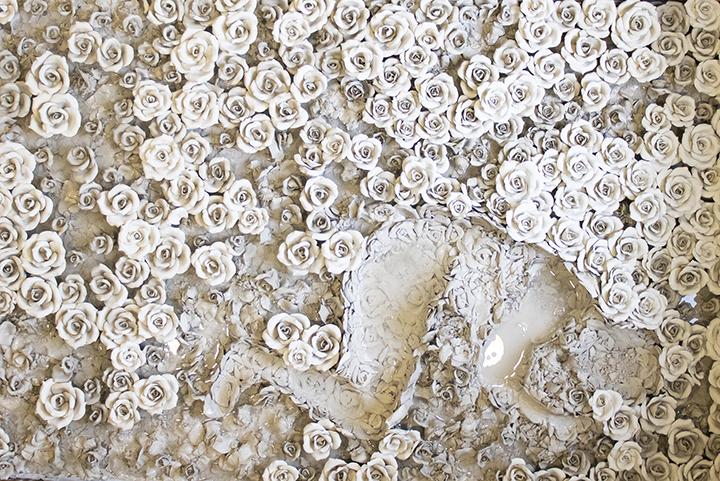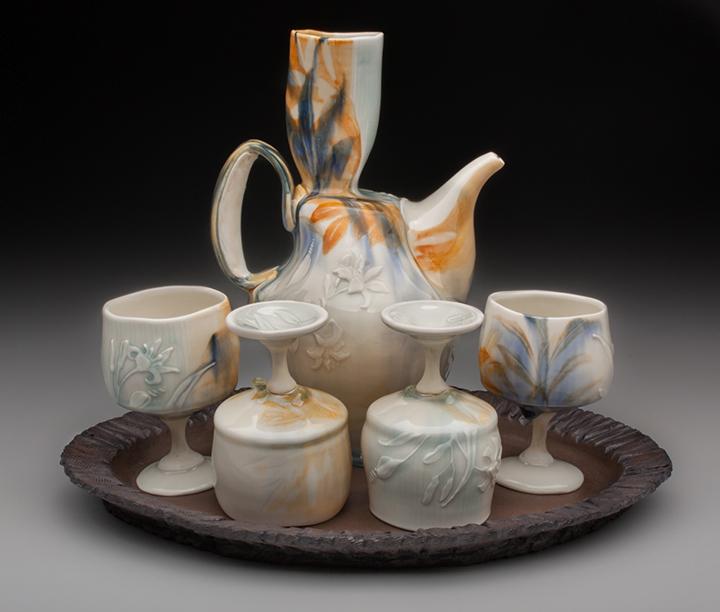
Final MFA Thesis Exhibitions on display at Eisentrager-Howard Gallery
calendar icon12 Apr 2021

Lincoln, Neb.—The MFA Thesis Exhibitions continue in the Eisentrager-Howard Gallery in Richards Hall through April 16. Two graduating Master of Fine Arts students in the University of Nebraska–Lincoln’s School of Art, Art History & Design are presenting their work in the final round.
The fourth round runs April 12-16 and features the work of Taylor Sijan (ceramics) and Amythest Warrington (ceramics). The two artists will present a live tour of their exhibitions via Instagram (@taylorsijan and @amythest_the_ceramicist) on Thursday, April 15 after 4:30 p.m. The gallery will be closed for oral examinations on Wednesday, April 14 until 2 p.m. and Thursday, April 15 after 2 p.m.
General hours for the MFA Thesis Exhibitions are Monday–Friday, 12:30-4:30 p.m. or by appointment. Call (402) 472-5522 to make an appointment. The gallery will be closed to all visitors during oral examination times listed above during each round.
The Eisentrager-Howard Gallery is located on the first floor of Richards Hall at Stadium Drive and T streets on the University of Nebraska–Lincoln city campus. Admission is free and open to the public.
Until further notice, all students, faculty, staff, and campus visitors are required to comply with current CDC safety guidelines (social distancing and facial coverings) in response to COVID-19. Details, exclusions and updates can be found at the City of Lincoln’s website at https://app.lincoln.ne.gov/city/covid19/how-to-help.htmand the University of Nebraska–Lincoln website at https://covid19.unl.edu. Additionally, all campus visitors must enter Richards Hall via the north doors if unaccompanied by student, faculty or staff. If greeted by an attendant at the stairs, please call the number below for further assistance.
Please contact the School of Art, Art History & Design for more information, to schedule an appointment, or any assistance getting into the building at (402) 472-5522 or schoolaahd@unl.edu.
Follow the Gallery on social media via Instagram @eisentragerhowardto stay apprised of any updates on these plans.
Below is more information about the final two artists and their exhibitions.
Amythest Hultman Warrington| The Weight of it All
Warrington was born in Iowa City, Iowa, but she was raised in a mobile military family growing up around the U.S. and Europe. She received her Bachelor of Fine Art in ceramics with minors in art history and art from the University of Northern Iowa in 2014. While working on her bachelor’s, she studied abroad at the Jingdezhen Ceramic Institute for a semester in Jingdezhen, China, through West Virginia University’s China Program.
Her mobile upbringing taught her that the details may differ from group to group, but the essence or core experiences surrounding loss, empathy and belonging are a universal language connecting us all. Warrington’s work explores the dichotomy between strength and frailty associated with these universal connectors through clay’s unique physical properties of malleability, recyclability and permanence once fired. Her meticulously crafted beautiful objects draw you into serious and often taboo subjects to comfort those who need it, while challenging those that are comfortable and providing a way forward through art.
Taylor Sijan| Growth
Sijan makes functional pottery that is richly decorated with layers of abstracted botanical imagery. As she works, she balances design decisions based on her understanding of aesthetic beauty influenced in the decorative arts, Art Nouveau, and the individualistic usefulness of contemporary American functional art pottery. By making vessels, she aims to connect her reverence for plants, nourishment and beauty with people who then add their own meanings and interpretations to her work after it becomes a part of their life.